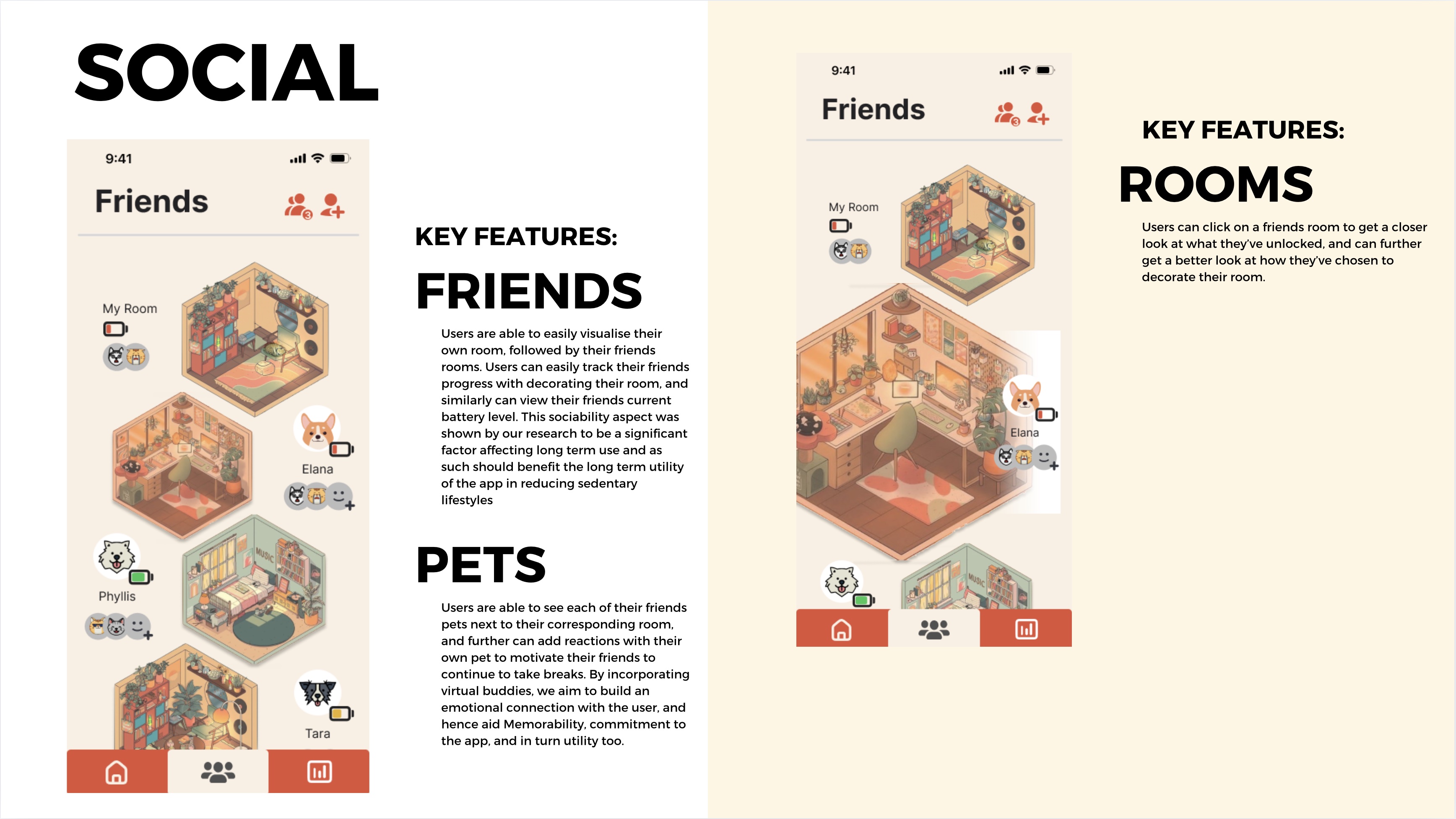Exploring the impact of digital lifestyles, leisure, and entertainment habits on individuals' sedentary behaviours at home, and the potential health risks associated with such behaviours.

Background research enabled a broad and nuanced understanding of the topic.
The rapid adoption of remote work, accelerated by the COVID-19 pandemic, has reshaped work-life dynamics, blurring professional and personal boundaries. This has led to prolonged periods of screen time and decreased physical activity.
Our focus was to explore the impact of digital lifestyle, leisure, and entertainment habits on individuals' sedentary behaviours at home, and the potential health risks associated with such behaviours.
We found that regular breaks and sufficient physical activity could mitigate these risks.
To develop a robust solution for our identified problem area, we engaged in a comprehensive ideation process that incorporated diverse ideation methods to explore the challenge from various perspectives.

We explored current approaches to mitigate health risks from sedentary lifestyles, including break reminders, screen time trackers, and gamified social incentives. Our evaluation identified their advantages but also highlighted significant weaknesses and potential areas for enhancement.

In our exploration of the problem space, we employed a diverse array of research methodologies, ranging from surveys and interviews to focus groups and diary studies. These methods allowed us to gain a comprehensive understanding.

Statement cards were crucial in our synthesis process, condensing key themes and insights into concise statements or quotes from our data. These cards served as catalysts for discussions, facilitated the sharing of findings, and guided decision-making processes.
To develop a robust solution for our identified problem area, we engaged in a comprehensive ideation process that incorporated diverse ideation methods to explore the challenge from various perspectives.

This facilitates rapid ideation, encouraging quick thinking and the generation of simplistic designs that could serve as building blocks for further exploration.

This encouraged us to approach the problem space from unconventional angles to unlock fresh insights & unconventional solutions.

This approach enabled us to break down the problem space into smaller, more manageable segments and facilitated the exploration of targeted solutions.
To develop a robust solution for our identified problem area, we engaged in a comprehensive ideation process that incorporated diverse ideation methods to explore the challenge from various perspectives.
Each team member generated multiple sketches for each component, bringing unique concepts and layouts for consideration. We shared our sketches, discussed their merits and drawbacks.
Our sketches below each represent a different take on the three core design ideas we selected based on our criteria for success.

We developed simple low-fidelity wireframes that outlined the basic structure of the application's core sections, which focused on interactions and layout.
The goal was to define the problem area and propose a solution clearly enough to elicit generalised feedback from early user testing.
Our first user testing session with five participants highlighted areas for improvement such as clarifying purpose, enhancing social features and the displayed statistics. We discovered users found the metaphor of a "diminishing battery level" confusing.


Our comprehensive user testing plan targeting ten critical features. This plan was crucial in structuring our approach to collecting both qualitative and quantitative data from both general users and design experts.
Incorporating specific changes based on issues identified in earlier stages of testing, we used Figma to develop a mid-fidelity prototype compatible with iPhone and Apple Watch for further testing with enhanced user experience and functionality.
We used valuable feedback gathered from user and expert testing to substantial overhaul our prototype and meticulously integrated fully functional interactions, animations, and graphics.
This rigorous refinement process culminated in a high-fidelity prototype that not only addressed the identified pain points and usability concerns but also user expectations.
